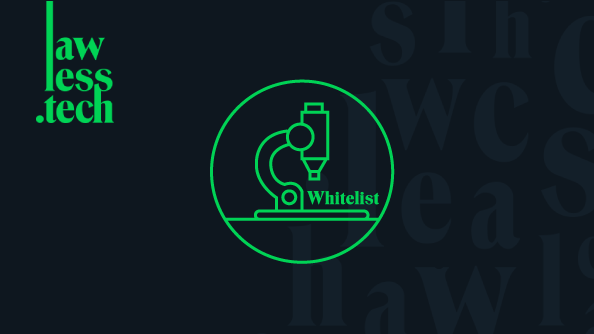Whitelist: Definition, Types, Features

In the world where the unlimited reign of uncontrollable ICOs is in obvious decline, most projects seeking to raise funds for their endeavors opt to use whitelisting, a model that enables them to personally meet their potential contributors and decide whether they really want to take their money. Why are they so selective? What this whitelisting thing is good for, legally and financially? Should your project also do it?
This week’s explainer piece may give you some insight.
What is whitelist?
The term whitelist usually refers to a list of pre-approved/approved entities allowed to take part in some endeavour.
In terms of ICO, whitelist is an index of participants in said ICO/presale that the issuer company deems trustworthy enough to let them purchase their tokens.
The projects using the whitelist model can estimate the exact amount of funds they will raise and get more data on the intentions and personal features of the potential investors. Also, they can make sure that people from from countries where ICO is prohibited, such as China and South Korea, do not participate in their campaign.
Participants typically have to undergo a registration process in order to take part in the crowdsale. In most cases, if a project opts to whitelist its potential contributors, it believes it’s popular enough to be selective. In some ways whitelisting is similar to a pre-order of a device or a movie that is yet to be released. The seller doesn’t have the device or the film at the moment, so when you pay them in advance they register you as a whitelisted person who can receive it as soon as it’s available. However, for the purposes of registration you provide the company with your contacts and personal information so that they would be able to identify you later. In an ICO, that’s more or less the same.
Is it the same as KYC?
It can be, but not necessarily. There are actually two kinds of whitelisting. One of them implies that the company uses KYC/AML rules, and the potential investors have to provide their personal data, undergo an approval process, and sometimes even write an essay explaining why they want to buy the tokens in question. Eventually, the company and the investors sign an agreement. This method has all the advantages in terms of its compliance with the law, however, said compliance isn’t much popular amongst some people who wish they were anonymous.
Whitelisting without KYC/AML is just about the pre-approval of the future investors’ wallet addresses. No personal data is transferred in this case, and the possibility of essay writing is also very low. However, in this case the company risks unpleasant legal ramifications, so this method is losing its popularity quite fast. From the legal point of view, whitelisting without KYC doesn’t have any difference from a regular token sale.
How does it work?
Technically, whitelist has to be linked to the crowdsale’s smart contract, effectively acting as a permit to contribute one’s assets. Most projects set up a lower limit for the amount of a possible contribution. In case someone attempts to send ETH from a non-whitelisted address, all payments therefrom will be rejected, and funds will be returned to sender (minus transaction fee). The same thing will occur if the transaction amount would be lesser than allowed minimum. Addresses of pre-approved contributors are either automatically uploaded from the project’s website, or one has to input them manually. If there isn’t much to input, the second option may seem more reasonable as it is less prone to bugs and other machine errors.
Is whitelisting a good idea?
It certainly is a good idea if your project seeks to comply with the regulations in certain jurisdictions that demand the mandatory identification of customers to prevent money laundering or terrorism financing. Additionally, a whitelist can help the project see the amount of money it can actually raise in advance, and therefore plan their future expenditures. Finally, if a project is serious about its work, it is able to sign a legally binding contract with its investors, thus ensuring interests of both parties.
Okay, but is it really necessary these days?
In purely financial terms, there is no vital need to use it if you don’t want to limit the number of participants. The project may freely omit the procedure if it doesn’t plan to raise a big amount of money, never gets involved with citizens and residents of the countries that have banned ICOs, and works only with crypto. However, while it’s easier to run an old-fashioned ICO, it increases the risks of having some legal trouble in the future.
As regulations with respect to ICOs get increasingly tougher, whitelisting your potential contributors looks more reasonable. This would ensure greater compliance with lots of local laws, make your work with banks much easier, and will generally show that you are serious about the work you do.
Who has done it?
Notable examples of companies using whitelist include Tezos, BrickBlock, Kin ICO, Cindicator and Oracles (POA) Network. Thus, whitelisting helped Oracles Network raise $19M in 56 seconds on the presale, so the project had to cancel the main token sale, so it essentially brings the likeness of venture investment to the world of ICOs.
This post originally appeared at https://lawless.tech/whitelist-definition-types-features/
lawless.tech is an online magazine devoted to covering the ongoing regulatory attempts to oversee and control the newest technologies
Join our Telegram channel, follow us on Twitter and Facebook to explore how regulations will impact the latest technological advances.
Coins mentioned in post: